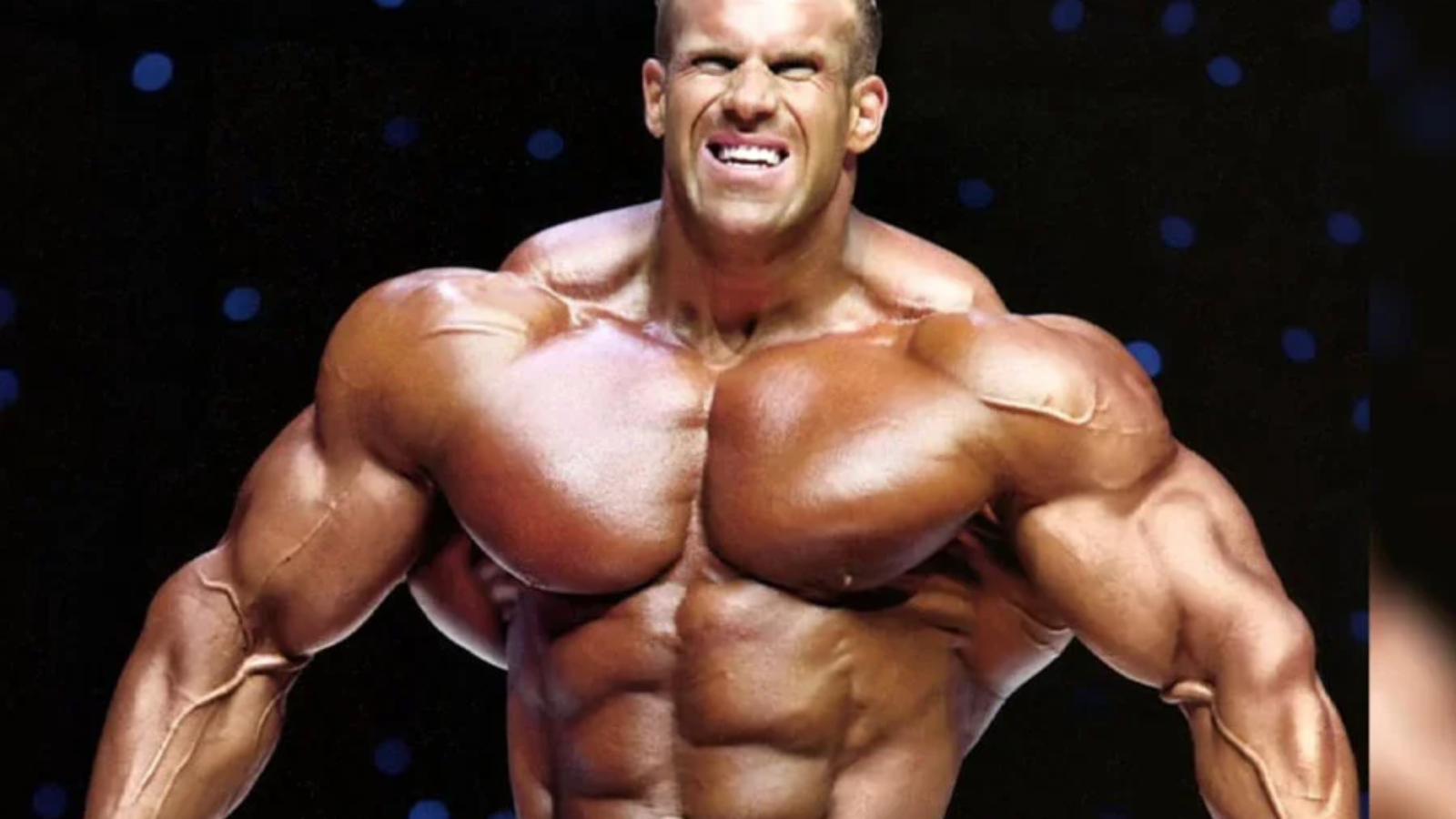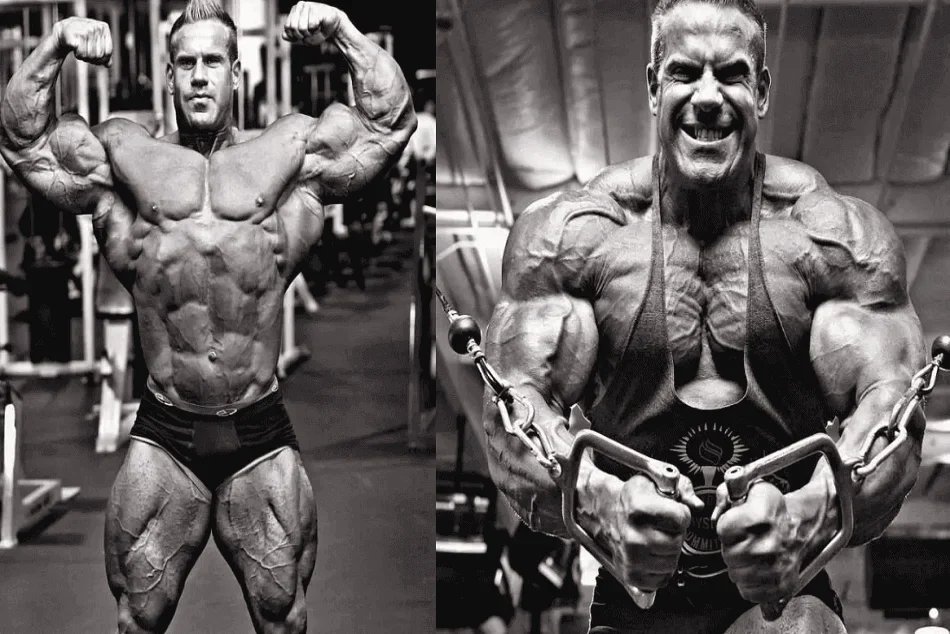Building a massive muscle physique takes more than just lifting weights and pounding protein shakes. It requires understanding the difference between strength vs hypertrophy physique, recognizing the signs you’re building muscle, and tailoring your workouts and nutrition for sustainable, natural growth. If you’re committed to building a strong, aesthetic body, this guide will walk you through the essentials of natural hypertrophy, what it truly means to be jacked, and how to structure your training to meet your goals.
Hypertrophy Meaning: What It Actually Is
Before diving into workout tips and signs of progress, it’s crucial to understand hypertrophy meaning. Hypertrophy is the process of increasing the size of your muscle fibers. This is different from strength gains, which are often more about neural efficiency and coordination. In hypertrophy, the emphasis is on the enlargement of muscle tissue through progressive overload, proper recovery, and adequate nutrition.
There are two primary types of hypertrophy:
- Myofibrillar hypertrophy – leads to denser, stronger muscles.
- Sarcoplasmic hypertrophy – increases muscle size by expanding the sarcoplasm (fluid in the muscle), common in bodybuilding.
The ideal natural hypertrophy physique balances both types, resulting in muscles that are not just big, but functional and strong.
Strength vs Hypertrophy Physique
Many people confuse being strong with being big, but the two are distinct. A strength-focused physique is generally more compact and dense. Powerlifters, for example, might not have the massive arms or chiseled abs of a bodybuilder, but they can lift enormous loads due to neuromuscular efficiency.
On the other hand, a hypertrophy physique is about visual muscle size. Bodybuilders train for volume and muscle symmetry, not necessarily raw strength. So, if your goal is to look like the classic big muscular men on stage or in fitness magazines, hypertrophy should be your primary focus.
Still, the two goals are not mutually exclusive. Strength training can support hypertrophy by allowing you to handle more weight over time, thereby increasing the stimulus for muscle growth.
Signs You’re Building Muscle
If you’re wondering whether your current plan is working, here are reliable signs of building muscle:
- You’re Gaining Weight (Slowly)
Lean muscle gain is gradual—about 0.5 to 1 pound per week is a healthy rate for most men. If you’re bulking and the scale is moving too fast, you may be adding unwanted fat. - Your Muscles Look Fuller
Especially post-workout, your muscles should look pumped and firm. Over time, this becomes your baseline appearance even without a pump. - Increased Strength
While hypertrophy and strength are different, they are linked. If your lifts are going up consistently, you’re likely building muscle too. - Better Muscle Definition
As your muscles grow and body fat drops or stabilizes, your physique becomes more defined. - Improved Posture and Daily Strength
Carrying groceries, climbing stairs, or even sitting upright feels easier. These are functional signs that your body is adapting to training. - Clothes Fit Differently
Shirts might feel tighter in the chest or arms, and pants may become snug around the thighs—classic indicators of growth.
These signs you’re building muscle should be viewed collectively rather than in isolation. Everyone progresses differently based on genetics, training history, and nutrition.
What Muscle Is the Easiest to Grow?
If you’re looking for fast results, it’s good to know what muscle is the easiest to grow. Generally, the legs and glutes respond well to training because they consist of large muscle groups with high fiber density. However, traps and deltoids are also known for growing quickly due to their frequent use in many compound movements.
Your training style and genetics also play a huge role. Someone with short bicep genetics, for example, might struggle to get that round bicep peak, but they can still grow thick arms with focused training.
Here’s a quick muscle growth hierarchy (ease of hypertrophy, generally speaking):
- Glutes
- Quads
- Lats
- Traps
- Delts
- Triceps
- Pecs
- Biceps
- Calves (notoriously stubborn)
The Opposite of Hypertrophy: Atrophy
As we focus on growth, it’s also worth understanding the opposite of hypertrophy—atrophy. This is the loss of muscle mass due to disuse, undernutrition, or overtraining. Skipping workouts, going too low in calories, or poor recovery can quickly undo hard-earned gains.
Signs of atrophy include muscle shrinkage, reduced strength, fatigue, and changes in posture. If you’re not careful, prolonged rest or crash dieting can push you toward muscle loss instead of gains.
What Is Considered Jacked?
There’s a lot of subjective interpretation around what is considered jacked, but generally, it refers to a visibly muscular, lean, and athletic build. Key indicators include:
- Defined deltoids and visible upper chest
- Vascular arms with thick forearms
- Low body fat (10–12% for men is a common benchmark)
- Muscular legs, not just a bulky upper body
- Strong, proportional frame
But how jacked is too jacked? This depends on context. For the average gym-goer, someone with professional bodybuilder size may look excessive or even unnatural. Socially, there’s a fine line between admiration and alienation when muscle size overshoots the norm.
Bulky Male vs Lean Muscle Aesthetic
The debate continues between achieving a bulky male look versus a lean, aesthetic physique. Bulkier bodies typically carry more overall mass, often at the expense of definition. Leaner physiques showcase muscle striations and vascularity, appealing more to those who want a cover-model look rather than brute size.
Both require discipline, but the approach is different:
- Bulking phase: High-calorie diet, heavier weights, fewer reps (6–10 range)
- Cutting phase: Calorie deficit, more reps (10–15), and higher cardio to reduce fat and reveal muscle
Regardless of which direction you choose, it all ties back to hypertrophy and how you structure your workouts.
Mastering Muscle Growth: Training Techniques, Genetics, and the Hypertrophy Mindset
In part one, we laid the foundation for understanding hypertrophy meaning, identifying the signs you’re building muscle, and comparing a strength vs hypertrophy physique. Now, let’s go deeper into the training principles, the role of genetics (like short bicep genetics), and how to optimize your plan to build that massive muscle frame you’re chasing.
The Science of Training for Hypertrophy
To build size, your training must align with the principles of hypertrophy. Whether your goal is to look like one of those big muscular men or simply improve your natural build, your training should revolve around these key components:
1. Progressive Overload
This is non-negotiable. To grow, your muscles need to experience increasing levels of tension over time. That means:
- Lifting more weight
- Performing more reps or sets
- Reducing rest between sets
- Improving form and range of motion
Your muscles adapt to stress. If the stress doesn’t change, neither will your body.
2. Volume and Frequency
High training volume (total reps × sets × weight) is vital for muscle growth. For hypertrophy, aim for:
- 10–20 sets per muscle group per week
- 8–12 reps per set
- Training each muscle group 2x per week
This approach balances intensity and frequency to give your body the right stimulus without burning out.
3. Time Under Tension (TUT)
Slowing down the eccentric (lowering) portion of your lifts can increase the TUT, which enhances hypertrophic signaling. For example:
- Bench press: 2-second lift, 3-second descent
- Dumbbell curl: 1-second lift, 4-second descent
This not only boosts growth but helps with mind-muscle connection—a key for targeting specific areas, especially if you’re dealing with short bicep genetics or lagging body parts.
Genetics and Muscle Growth: The Elephant in the Gym
Genetics matter—but they don’t define you. If you have short bicep genetics, it means your muscle insertion points are higher, which might limit the appearance of a full “peak.” That said, it doesn’t stop you from building thick, powerful arms. Focus on:
- Hammer curls to target brachialis
- Preacher curls to isolate biceps
- Pull-ups and rows to support biceps with compound back work
Other genetic factors include muscle fiber composition, limb length, hormone levels, and tendon insertions—all of which influence your potential for a natural hypertrophy physique.
What Muscle Is the Easiest to Grow? (Revisited)
While the glutes, traps, and delts often respond quickly to training, the easiest muscle to grow for most men is the trapezius. It’s heavily involved in deadlifts, shrugs, rows, and carries. If you’re regularly doing compound lifts and using progressive overload, your traps will likely grow without direct targeting.
But don’t forget about the legs. Though often neglected, the quads and hamstrings are among the largest muscles in the body and respond dramatically when trained hard.
Top exercises for fast-growing muscles:
- Traps: Barbell shrugs, farmer’s carries, rack pulls
- Glutes: Hip thrusts, Bulgarian split squats, RDLs
- Delts: Overhead press, lateral raises, upright rows
- Quads: Front squats, leg press, walking lunges
The Hypertrophy Lifestyle: Beyond the Gym
Achieving a bulky male physique doesn’t happen in the gym alone. The most jacked physiques are built with attention to recovery, nutrition, and mindset.
Nutrition for Hypertrophy
To gain muscle, you must be in a caloric surplus. This doesn’t mean stuffing yourself with junk food—it means calculated eating with muscle-building in mind.
Macronutrient guidelines:
- Protein: 0.8–1g per pound of body weight daily
- Carbs: 2–3g per pound (fuel training and recovery)
- Fats: 0.3–0.5g per pound (supports hormones)
Meal timing, supplements (like creatine, whey protein, and fish oil), and hydration are all part of the puzzle. The cleaner your diet, the leaner your bulk—and the easier it will be to maintain that natural hypertrophy physique.
Sleep and Recovery
You don’t grow in the gym—you grow while recovering. Without sleep, your testosterone and growth hormone levels tank, your insulin sensitivity decreases, and your gains stall. Aim for:
- 7–9 hours of quality sleep per night
- Scheduled rest days and deload weeks
- Active recovery: walking, stretching, foam rolling
Neglect recovery, and you risk crossing into the opposite of hypertrophy—muscle atrophy.
What Is Considered Jacked? (Detailed)
We touched on this earlier, but it’s worth breaking down: what is considered jacked?
Here’s a functional definition for the average lifter:
- Lean body mass: 180–200 lbs at under 12% body fat
- Key measurements (roughly):
- Arms: 17–18 inches
- Chest: 44–48 inches
- Quads: 24+ inches
- Waist: 30–34 inches
This combination of size and leanness is visually impressive without venturing into “freaky” territory. Most men who are how jacked is too jacked candidates tend to be well beyond these numbers—often with pharmaceutical enhancement.
Being naturally jacked means reaching a muscular, athletic build with hard work, consistency, and intelligent programming.
The Mental Shift Toward Hypertrophy
Muscle growth isn’t just physical—it’s mental. A true hypertrophy-focused mindset includes:
- Patience: Gains are slow and steady
- Discipline: Diet, sleep, and training require consistency
- Adaptability: Tweaking workouts as your body adapts
- Focus: Understanding your unique physiology
If you want a massive muscle look, stop chasing novelty. The basics work: compound lifts, progressive overload, proper eating, and recovery. Master them. Repeat them. Dominate them.
Avoiding Common Hypertrophy Mistakes
Even if you train hard, common missteps can sabotage growth:
- Chasing Pumps Over Progression
A pump feels great, but it doesn’t equal long-term gains. Track your lifts and get stronger over time. - Program Hopping
Stick to one program for at least 8–12 weeks before making major changes. - Under-Eating
You can’t grow muscle in a calorie deficit. Period. - Neglecting Weak Points
Avoiding lagging muscles like calves or rear delts results in imbalance. Train everything. - Ignoring Recovery
Overtraining leads to burnout and the opposite of hypertrophy: breakdown, not growth.
The Long Game of Muscle Building: Advanced Strategies, Specialization, and Maintaining a Jacked Physique
So far, we’ve unpacked the core principles of hypertrophy, how genetics like short bicep genetics affect your look, and how to read the signs you’re building muscle. Now, let’s dive into advanced hypertrophy strategies, how to specialize lagging body parts, and what it truly takes to stay jacked for life.
If you want a massive muscle build that lasts—not just a seasonal pump—you have to think long-term. The goal isn’t just to look good in the mirror once a year. It’s to maintain an impressive, natural hypertrophy physique 365 days a year, even when you’re not flexing.
Advanced Hypertrophy Techniques
Once you’ve built a solid foundation of muscle, the basic progressive overload approach may start yielding diminishing returns. That’s when advanced hypertrophy techniques can reignite your gains:
1. Drop Sets
Perform a set to failure, then reduce the weight by 20–30% and keep going. Repeat this process 2–3 times.
- Great for: arms, shoulders, and chest
- Benefit: maximizes fatigue and time under tension
2. Rest-Pause Sets
Pick a weight you can lift for 6–8 reps. Rest 10–15 seconds, then lift again. Do this for 3–4 mini-sets.
- Great for: compound lifts and stubborn body parts
- Benefit: stimulates both strength and hypertrophy
3. Giant Sets
Four or more exercises done back-to-back for the same muscle group with little to no rest.
- Great for: legs, back, and arms
- Benefit: extreme pump, increased training density
4. Tempo Training
Controlling the eccentric (lowering) and concentric (lifting) speeds boosts mind-muscle connection.
- Example: 3-1-2 tempo (3 seconds down, 1 pause, 2 up)
- Benefit: increased muscle fiber recruitment
Incorporating these methods into your plan helps stimulate growth from new angles, especially when you’ve plateaued.
Specializing Lagging Body Parts
Want bigger arms, a thicker back, or more imposing quads? Then specialization blocks are your answer. These are focused 4–6 week periods where you give priority to a lagging muscle group.
Example: Arm Specialization Block
- Training frequency: 3x per week
- Volume: 16–20 sets for biceps and triceps
- Intensity: Moderate weight, 10–15 rep range
- Supportive volume: Reduce training load for other muscles to recover fully
By specializing, you direct more recovery, nutrition, and neural focus to specific muscle groups. This is especially helpful for those with limitations like short bicep genetics, where you need smarter training—not just more of it—to grow.
Bulking Without Getting Fat
There’s a fine line between building mass and becoming a puffy mess. A smart bulk focuses on lean tissue gain and minimizes fat accumulation.
Tips for Clean Bulking:
- Track your calories: Use a 10–15% surplus, not 50%
- Monitor progress weekly: If you’re gaining more than 1.5 lbs per week, you’re likely adding fat
- Include cardio: 2–3 sessions per week helps insulin sensitivity and keeps you lean
- Time carbs around workouts: Maximize performance and recovery while limiting fat storage
This ensures you gain size without bloating or ruining your jacked look.
How Jacked Is Too Jacked?
As you progress, you might wonder how jacked is too jacked—especially if your traps are popping through your hoodie and your arms stretch your shirt sleeves. There is no universal answer, but there are thresholds:
- Functional discomfort: If walking, running, or tying your shoes becomes difficult
- Social extremes: When your appearance draws unwanted attention or raises steroid suspicion
- Health risks: If your bulk compromises cardiovascular or metabolic health
For most, these limits are rarely reached naturally. If you’re staying lean and mobile, more muscle is typically a benefit. The issue arises when mass comes at the expense of balance or longevity.
The Natural Hypertrophy Physique Lifestyle
You don’t need drugs or extreme methods to build a great body. The natural hypertrophy physique is attainable through smart training, consistent nutrition, and structured recovery.
Here’s what a sustainable lifestyle looks like:
- Training: 4–5 days a week with focused programming
- Nutrition: Whole foods, lean proteins, smart carbs, healthy fats
- Supplements: Creatine, whey, multivitamin, maybe a pre-workout
- Recovery: 7+ hours of sleep, mobility work, and stress management
- Mindset: Patience, discipline, and long-term perspective
Big, lean muscle takes time—but it also stays with you if you treat your body well.
Building the Ideal Bulky Male Look
If your goal is to be a bulky male with head-turning mass, here are body composition targets to aim for:
- Weight: 190–220 lbs at 10–15% body fat (depending on height)
- Key lifts:
- Bench press: 1.5–2x bodyweight
- Squat: 2x bodyweight
- Deadlift: 2.5x bodyweight
This blend of size and performance reflects real, hard-earned muscle—not just visual fluff. Being big and strong is about more than just aesthetics—it’s about capability.
Muscle Maintenance: Keeping Gains Long-Term
Muscle doesn’t vanish overnight, but it can fade without attention. To maintain your massive muscle gains, you need to shift from growth mode to a maintenance phase:
- Training: 2–3 sessions per week with compound lifts
- Nutrition: Eat at maintenance or slightly below (if cutting)
- Volume: 6–10 sets per muscle group per week to maintain mass
Muscle memory is real—if you ever reduce training due to life, injury, or travel, you can regain lost size relatively quickly once you resume proper training.
Signs You’re Still Building Muscle (and Not Just Spinning Your Wheels)
Even in advanced phases, it’s important to monitor the signs of building muscle:
- Consistent strength gains (even small)
- Clothes fitting tighter (in the right places)
- Visual improvements in the mirror
- Skin tighter over muscles
- Endurance in your sets increases
These signs prove your work is paying off, even if the scale isn’t moving dramatically.
Wrapping Up: From Average to Jacked, Naturally
To wrap up, becoming jacked, bulky, and strong doesn’t require magic. It requires mastery of the basics, intelligent use of advanced methods, and a deep respect for recovery and patience.
Let’s recap your path:
- Understand hypertrophy meaning and how it differs from strength
- Learn to spot the signs you’re building muscle
- Account for genetics like short bicep genetics
- Use smart programming for your goals—bulk, cut, or maintain
- Apply advanced strategies like rest-pause and specialization
- Stay lean and healthy while chasing the bulky male ideal
- Know the limits of how jacked is too jacked, and aim for balance
Whether you’re new to training or deep in your fitness journey, the road to a massive muscle body is open to anyone willing to earn it naturally.
You don’t need gimmicks. You don’t need shortcuts. You just need a plan, grit, and time.
Now go lift.




